Our main engine now has more than 8,000 hours, so increased oil leaks are more or less expected. But up until recently it has leaked almost nothing and the change to leaking more happened quite quickly, so we decided to dig deeper. Oil seepage can be caused by loosening bolts, tired/old gaskets and seals, and excess crankcase pressure. The Deere specification indicates that crankcase pressures of up to two inches of water column are acceptable.
The instrument used to measure the crankcase pressure is a manometer. You can easily construct one out of a U-tube, calibrated in inches, and partially filled with water. We chose to buy an electronic manometer since they are fairly inexpensive and easy to use. In a past career as a mechanic, I used manometers to adjust multi-carburetor systems on exotic cars, so I kind of like them. We bought a TK put a name here to use on Dirona.
The challenge in measuring the crankcase pressure on our engine is that it doesn’t have a dipstick tube and instead uses a combined oil fill cap and dipstick tube. So it was not immediately obvious how to adapt the 1/4″ hose from the manometer to seal onto the engine in order to read the crankcase pressure.
We ended up using a short section of silicone hose that seals inside the oil fill port and a wood-through hull plug in the end with the adapter for the manometer threaded into the hose. It wasn’t beautiful, but it sealed fine and that’s all that matters. The measurements proved interesting: the water pressure at all engine speeds was a fairly constant 2.3 to 2.4 inches. This is above the Deere specification of up to two inches, so something wasn’t right.
A crankcase might have excess pressure for three reasons: 1) the exhaust gas recirculation system is blocked or not operating correctly (allowing pressure to build), 2) leaking turbocharger oil seals (leaking compressed air into the turbo lubricating oil drain back), or 3) excess leakage past the engine piston rings (essentially a worn out engine).
Option one is the cheapest and easiest to address, so we tried it first. We changed the Racor Airsep filter (oil/vapor separator) and checked for any other possible blockages in the exhaust gas recirculation system.
Great news. The crankcase pressure went back to a nice low number indicating the engine continues to be in excellent condition. We measured 0.15″ at idle, 0.00″ at 1,500, and -0.20″ at 2,000 RPM. The oil seepage is now addressed and the engine is clearly in good condition with good turbo seals and piston rings that aren’t even starting to show wear. It’s a great engine.
Should we replace the Airsep filter on a regular basis? To my knowledge, there is no Deere-recommended replacement period or, if there is, I haven’t been able to find it. I’m not sure what replacement period we would use. We’ll likely just add an entry to our maintenance log to check crankcase pressure every six months and replace the filter should the pressure increase again. We’ve trimmed down the tubing we used to make the initial pressure measurement into a compact readily-accessible package, so the test is clean and quick.
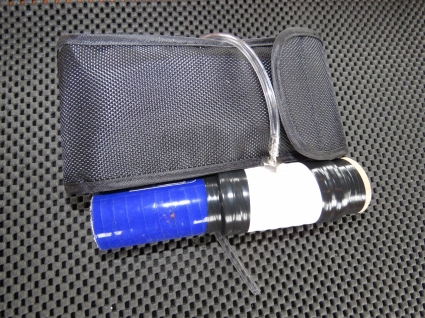
|
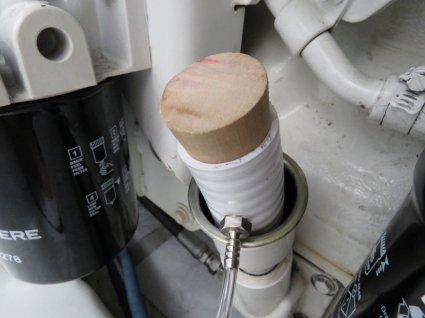
|
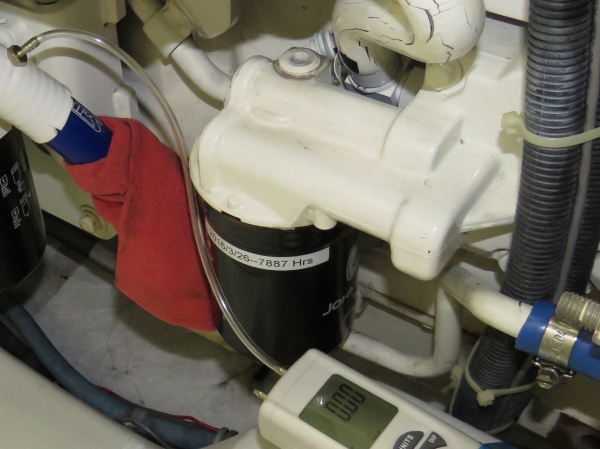
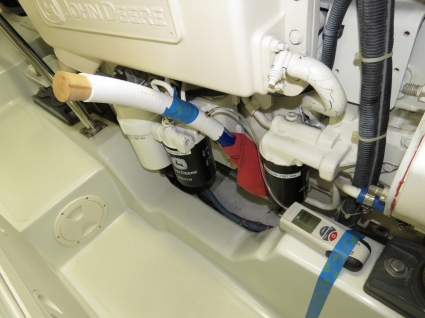
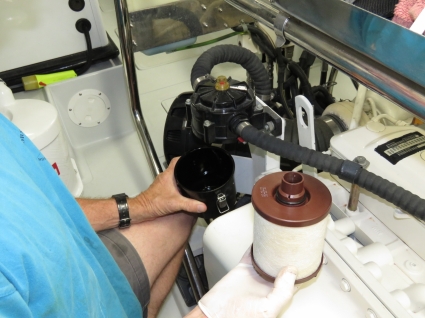
Good evening James, a thought occurred that you could get a replacement filler cap and thread the fitting into that for the Manometer. Benefit that it would take up mess less space and be a better seal.
I think that would be an excellent approach if we were permanently attaching the manometer. There’s nothing wrong with doing permanently attaching the manometer but we use the same instrument for all engines so we just run a test and then put it away again. Our usage pattern is as a test device rather than a permanently installed sensor.
Hello. This filter should be changed every 750 hours,that is common recommendation from company which produces them.
Yes, you are right and I could live with 750 hours. But that is not frequent enough and, if you do leave it that long, it can cause excess crankcase pressure which can lead to oil leaks. What’s going on is that the engine manufactures need to meet emission requirements so they end up using a very fine oil mist filter. Burning oil is hard on emissions. These super fine oil mist filters plug very quickly. You’ll notice that all the manufacturers use the finest mist filter but RACOR does make much less fine elements. The engine manufacturers specify fine filters to meet emissions with less engineering cost.
The solution for operators is to change this filter much more frequently or move to less fine mist filter. I’m doing the latter.
Re. leaking past piston rings, in airplane engines, those represent only localized wear. Pistons, cylinders, even rings can sometimes be replaced separately. Is the big marine diesel too monolithic for that?
Hey Frank. Good hearing from you. Yes, you can replace pistons, rings, and sleaves (cylinders) individually but it’s normal to replace the three together as a unit. Typically all cylinders are replaced at once unless an early failure takes out one cylinder in which case only the damaged cylinder might be replaced.
In recreational marine applications it’s not that common to wind up enough hours to need to overhaul a diesel. They tend to last 20 to 25 years and get replaced more from age and improving efficiency of modern engines rather than usage hours. On Dirona, we have 8,000 hours and should be able to run multiples of those hours without need for overhaul.
I seem to recall some diesels have crankcase pressure sensors that feed to J1939?
Yes, you are right Jamie. These J1939 sensors appear to be mostly targeting engine manufacturers rather than aftermarket operators but they are available. Some manufacturers like Caterpiler have them available as part of the standard installation. Not an option on our John Deere engine but we now have setup that makes testing so fast and easy it’s almost as good as a permanently installed sensor.